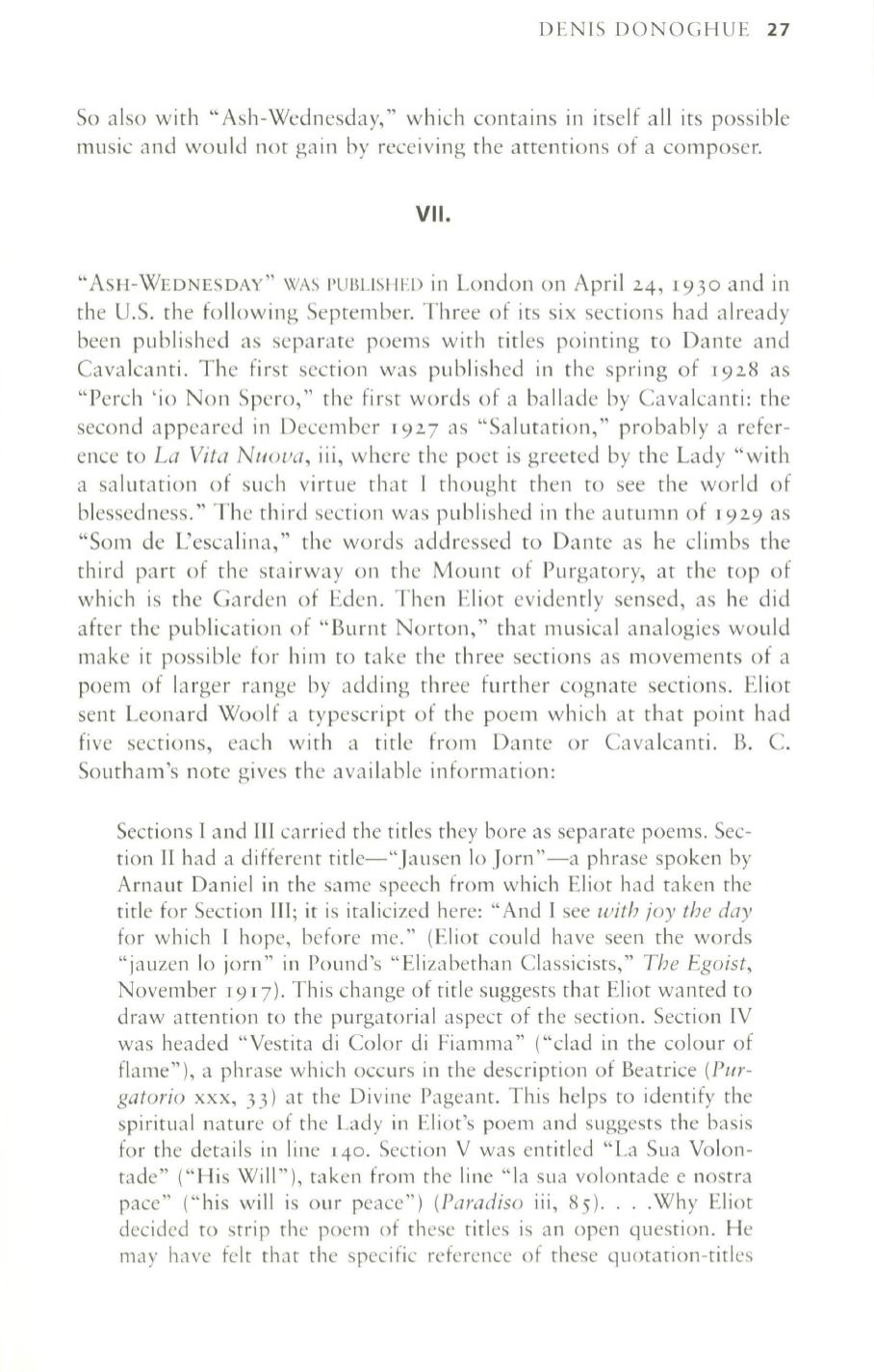
DENIS DONOGHUE
27
So also with "Ash-Wednesday," which contains in itself all its possible
music and would not gain by receiving the attentions of a composer.
VII.
"ASH-WEDNESDAY"
WAS PUBLISHED
in London on April
24, 1930
and in
the U.S. the following September. Three of its six sections had already
been published as separate poems with titles pointing
to
Dante and
Cavalcanti. The first section was published in the spring of
1928
as
"Perch 'io Non Spero," the first words of a ballade by Cavalcanti: the
second appeared in December
T927
as "Salutation," probably a refer–
ence
to
La Vita Nuova,
iii, where the poet is greeted by the Lady "with
a salutation of such virtue that [ thought then to see the world of
blessedness." The third section was published in the autumn of
1929
as
"Som de L'escalina," the words addressed
to
Dante as he climbs the
third part of the stairway on the Mount of Purgatory, at the top of
which is the Garden of Eden. Then Eliot evidently sensed, as he did
after the publication of "Burnt Norton," that musical analogies would
make it possible for him to take the three sections as movements of a
poem of larger range by adding three further cognate sections. Eliot
sent Leonard Woolf a typescript of the poem which at that point had
five sections, each with a title from Dante or Cavalcanti. B.
C.
Southam's note gives the available information:
Sections I and 111 carried the titles they bore as separate poems. Sec–
tion 1I had a different title-"Jausen
10
Jorn"-a phrase spoken by
Arnaut Daniel in the same speech from which Eliot had taken the
title for Section Ill; it is italicized here: "And
r
see
with joy the day
for which I hope, before me." (Eliot could have seen the words
"jauzen
10
jorn" in Pound's "Elizabethan Classicists,"
The Egoist,
November
I
9
I
7). This change of title suggests that Eliot wanted
to
draw attention
to
the purgatorial aspect of the section. Section IV
was headed "Vestita di Color di Fiamma" ("clad in the colour of
flame"), a phrase which occurs in the description of Beatrice
(Pur–
gatorio
xxx,
33)
at the Divine Pageant. This helps
to
identify the
spiritual nature of the Lady in Eliot's poem and suggests the basis
for the details in line
140.
Section V was entitled "La Sua Volon–
tade" ("His Will"), taken from the line "Ia sua volontade e nostra
pace" ("his will is our peace")
(Paradiso
iii, 85) ....Why Eliot
decided
to
strip the poem of these titles is an open question. He
may have felt that the specific reference of these quotation-titles


